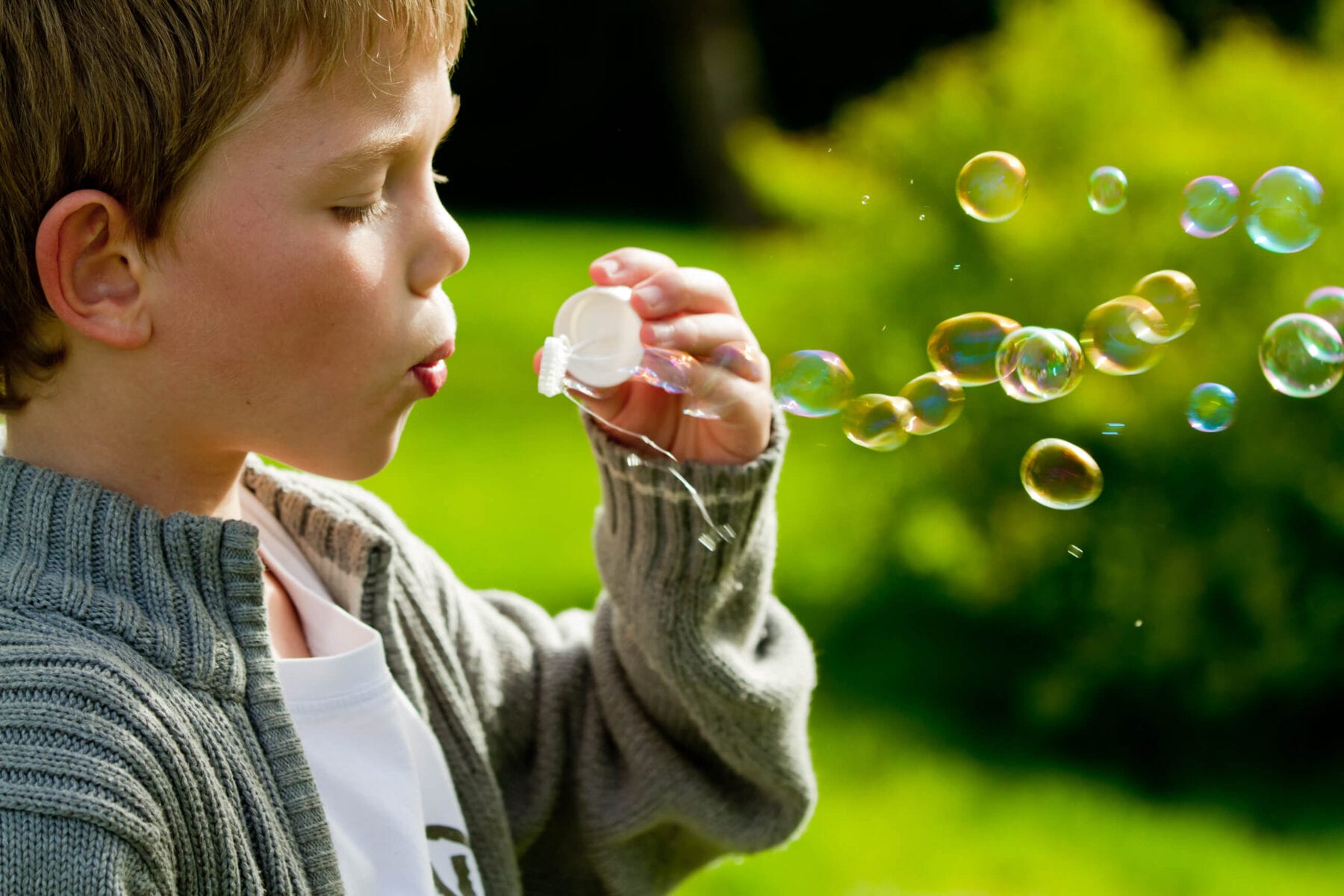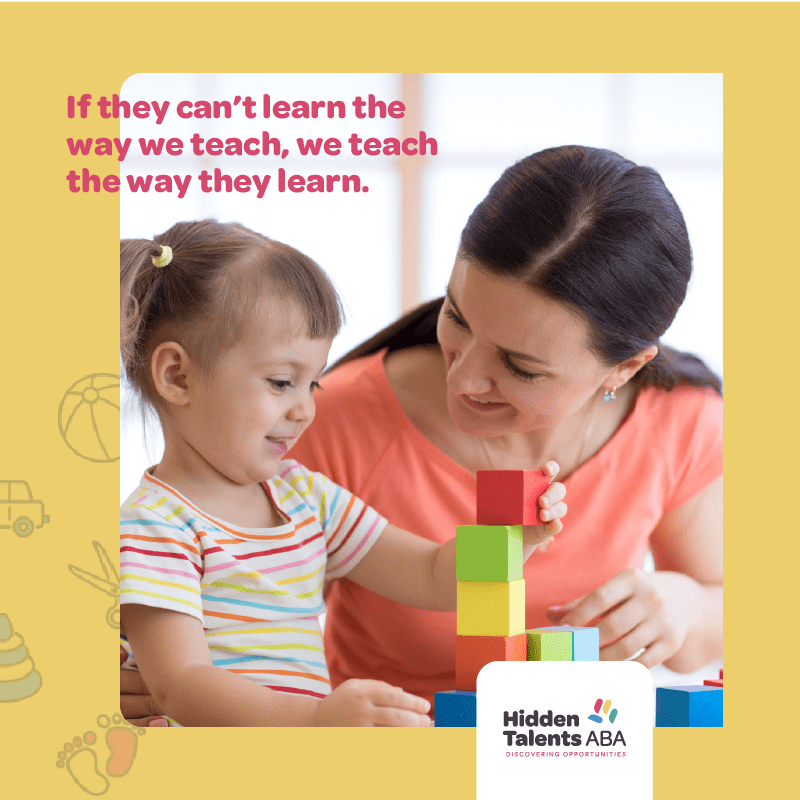All children love activities, and autistic kids are no exception. But besides being fun and engaging, a variety of sensory, physical, and mentally stimulating activities hold an added bonus for autistic children. They can be used as an effective way to improve their attention span, self-confidence, social skills and communication skills.
Here, we’ve listed some of the best activities your autistic child will enjoy and benefit from.
Sensory Activities and Games for Autistic Children
Sensory bottle
Sensory bottles, sometimes also called discovery bottles or calm down bottles, are a great way to keep your autistic child focused and engaged. At the same time, they are useful tools for providing sensory regulation as they can help your child calm down after experiencing sensory overload.
To make a sensory bottle, simply wash an old plastic bottle and fill it partially with water. Then add some food coloring, marbles, glitter, and beads, or customize it in any other way that will appeal to your child. Seal the lid in place using a hot glue gun. Let your child shake the bottle and enjoy the sensation of colorful parts slowly moving through the bottle.
For inspiration on how to make sensory bottles for children with autism, check out the Sensory and Discovery Bottles board on Pinterest, where you can also share your own projects.
* This project is recommended for children ages 5 and up as the bottle may contain choking hazards.
Make edible jewelry
Due to their coordination challenges and limited core strength and stability, children with autism often experience delays in the development of fine motor skills. Making edible jewelry will help your child hone those skills that require intricate hand and finger movements, while enjoying a fun activity.
To make edible jewelry, start by taking a piece of string or shoestring licorice that is long enough to fit over your child’s head when tied. Encourage your child to thread some edible items on the string, such as the Fruit Loops cereal, Lifesavers Gummies and other colorful candy, marshmallows, or edible play dough. Tie the ends of the string together to make a necklace or bracelet. You can take this activity further by asking your child to recognize the colors of the items used or count the number of cereal or candy pieces on the string.
Make tactile collage
Many children with autism spectrum disorder find the sensation of different textures overwhelming. If this is the case with your child, then making a tactile collage may be a great way to introduce them to a wide range of textures and help them deal with sensory issues. This activity is also useful for practicing cutting and improving your child’s fine motor skills.
To create a tactile collage, prepare cardboard or cardstock (the size can range anywhere from 7×9 inches to 14×20 for older children). Pour some glue in a small jar and let your child apply it with a brush to prevent their hands from getting sticky. They can glue a variety of materials like magazine clippings, small pieces of fabric, aluminum foil, glitter, string, felt, and puff paint. You can also ask your child to sort materials by colors and encourage them to talk about what they are doing to enhance their communication skills.
Brain Activities for Autistic Kids
Matching games
Matching games are simple but effective educational activities where your child has to match words with pictures. These are perfect games for kids with autism who typically appreciate simplicity and order. Based on your child’s skill level and interests, you can use matching games to teach them about numbers, foods, colors, animals, or any other subject.
You can download the free Matching Games for Autism app, or purchase Word to Picture Matching Cards specially designed for children with autism.
Smell games
Children with autism are often sensitive to smells and may experience them more intensely than neurotypical children. Smell games are a fun activity that will not only let your child explore a variety of smells, but also help them improve memory and build communication skills.
To make a smell game, fill small containers (such as painted jam jars) with fragrant ingredients like lavender, coffee, soap, lemon, rosemary, mint, rose petals, popcorn, and cinnamon sticks. If you are using a liquid, like vanilla essence for example, place a cotton ball in the container to soak up the fragrance. Just make sure to avoid any smells your child dislikes or is sensitive to. Fasten a piece of thin fabric on top of the container with a rubber band and ask your child to identify the different smells.
Building Social Skill for an Autistic Child
Reading
Reading may help autistic children develop language and improve their cognitive skills. Children with autism spectrum disorder typically experience difficulties when it comes to reading comprehension and are usually better at identifying words than understanding their meaning. That’s why books with pictures and little text are the best way to get your child with autism interested in reading.
To keep your child engaged, make sure to target their area of interest, whether it’s trains, pets, history, or any other subject. You can also encourage your child to enact the characters while reading the book to make the activity more fun. Or ask them how they would feel if they were different characters to teach them empathy skills and encourage interaction.
Sharing time
Children with autism often have little or no interest in the world around them and in sharing their experiences with others. Fortunately, there are many fun activities that can make it easier for your child to share their attention. You can play games such as “I Spy” that require you to look at the same object or ask your child to show you what they are drawing or playing with to improve their communication skills. Take time to play together with your child to encourage them to share toys, role-play, take turns, talk about their experience, and regulate emotions.
Calming Activities for a Child with Autism
Fidget toys
Fidgets toys are designed to help children with autism focus, filter out the overwhelming sensory information, and remain calm in stressful situations. These toys can also be used to help ease transitions into new situations or activities and deal with routine changes, which is often a challenge for autistic kids.
There is no shortage of fidget toys to choose from like tangle toys, stress-less gel balls, koosh balls, magic snakes, and more. A wide range of fidget toys and stress balls are available for purchase from National Autism Resources, Sensory Direct, and Amazon. When looking for a fidget toy, choose the one that allows for movement but isn’t too distracting so that it completely draws your child’s attention away.
Coloring
Coloring pages are a great way to help your child with autism focus, build fine motor skills, learn new words, and practice taking turns and interacting with others. What’s more, coloring according to directions will help them learn to recognize colors and numbers, follow instructions, and work on task completion. If your child has fine motor skill challenges, consider using large or triangular-shaped crayons instead of regular ones.
Websites like Special Learning House and All Kids Network offer a wide range of free printable coloring pages suitable for kids with autism. Some coloring books are specifically designed for autistic children, such as The Autism Coloring Book: I See Things Differently With My Superhero Brain, available on Amazon.
Constructive Play For an Autistic Kid
Puzzles
Puzzles are an excellent way to provide your autistic child with a satisfying tactile sensation, help them improve focus and fine motor skills, in addition to having a calming effect when your child is feeling restless. Completing puzzles together with others and talking about what they’re doing can help enhance your child’s vocabulary and communication skills.
Always make sure to choose a puzzle with a suitable difficulty level for your child. You can find a wide range of puzzles for autistic children at Autism-Products.com, National Autism Resources, as well as Autism Community Store.
Building blocks
Playing with building blocks is one of the most popular activities among autistic children. Since the blocks come in limited shapes and sizes and the building process requires repetitive movements, kids with autism perceive this activity as structured and predictable. Building blocks can be highly beneficial for your child’s physical, cognitive, and social-emotional development, in addition to improving their fine motor skills. Furthermore, it encourages children to practice verbal and nonverbal communication skills, sharing with others, taking turns, and problem solving.
The STEM toy company Strictly Bricks offers a variety of building blocks in different sizes, colors, and textures, suitable for children with autism. Award-winning BizyBeez Magnetic Building Blocks is another great choice of building blocks for autistic kids.
Physical Play For an Autistic Child
Dancing
Dancing is a fun and relaxing activity for children with autism. Dancing is beneficial not only when it comes to boosting your child’s body image and body awareness, but also for improving their concentration and memory, enhancing communication skills, increasing empathy, and developing the ability to adapt to different situations.
Let your child start with free movement and move to the music any way they wish. Later on, try introducing movement prompt exercises where you ask them to dance fast or slow, freeze when the music stops, move only one part of the body, make large or small movements, and so on. Dancing to children’s songs with actions, like “If You’re Happy and You Know It,” “Hokey Pokey,” or “Baby Shark” is a good way to practice following instructions and motor planning.
Exercise
Children with autism spectrum disorder often have limited gross motor function, strength, and coordination. Exercising on a regular basis will allow your child not only to improve these skills and their physical health, but also to enjoy a variety of activities with friends and family. Physical activity can also enhance a general feeling of well-being and counterbalance depression and anxiety, in addition to improving your child’s learning and social behavior. Regular physical activity has even been shown to decrease repetitive behaviors like body rocking, spinning, and head-nodding in children with autism.
You can make exercises enjoyable by playing games that encourage your child to move in different ways, for example, run, jump, hop, and skip, and play with a variety of equipment such as balls, bats, and racquets. A simple way to add some physical activity into your child’s daily routine is to walk to school and make regular trips to the playground. You can gradually expand the amount of time your child spends doing physical activities until they reach the recommended one hour of exercise per day.
Obstacle course
Children with autism enjoy moving around and most will be happy to navigate indoor and outdoor obstacle courses. This activity can be designed to target a variety of motor and cognitive skills and include a wide range of activities from simple to more challenging. Obstacle courses are some of the best ways for your child to work on their balance, strength, gross motor skills, and coordination, while having fun. For children who have difficulties with motor planning and sequencing, this activity will provide them with an opportunity to practice completing tasks.
To make an obstacle course, you can use anything from mats and foam shapes to chairs, ladders, and hula hoops, or any other objects you may find in your home or garden. Incorporate activities such as bean bag tossing, throwing and catching a ball, and jumping ropes. You can ask your child to walk on uneven surfaces, stand or hop on one foot to practice balance, push or pull heavy items, do push ups or sit ups to increase strength, and do jumping jacks and run around cones to work on coordination. Whatever activities you choose, make sure to explain the course to your child in advance and give it a practice run.





